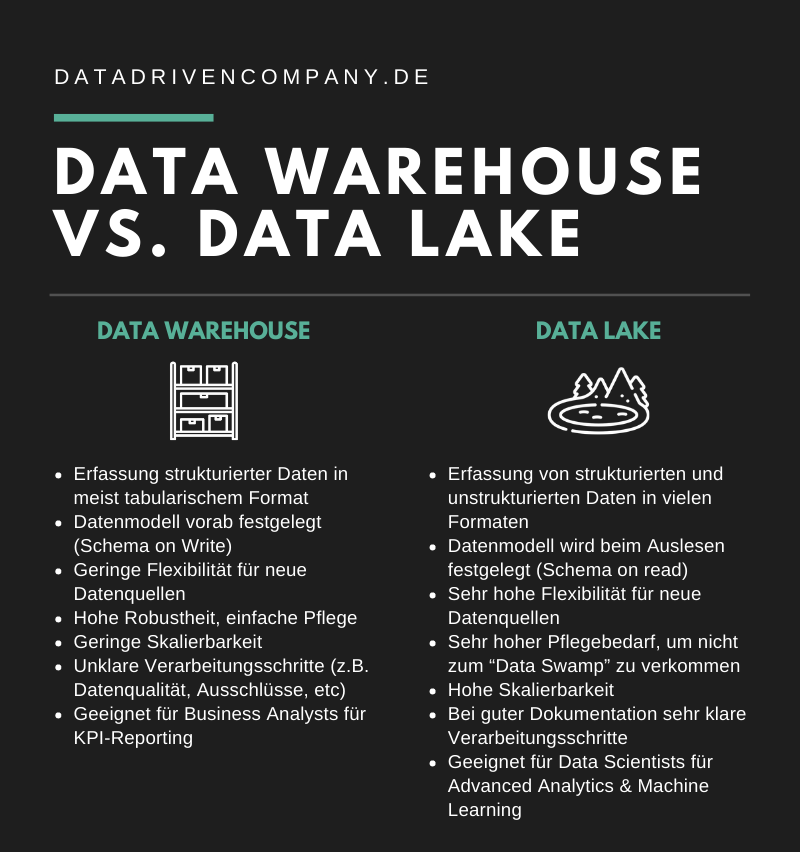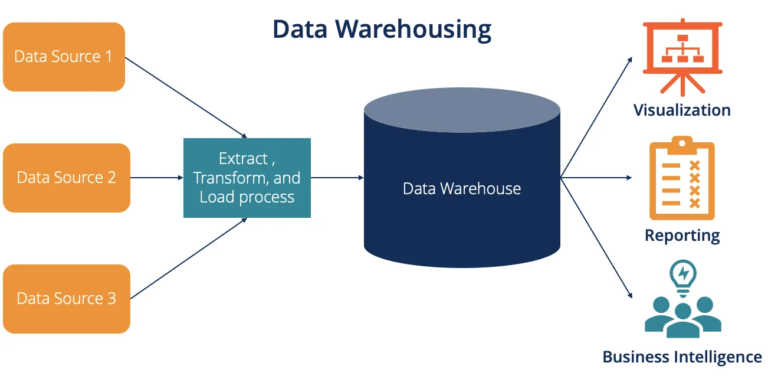
I did a whole article on the evolution of the modern data warehouse, so I won’t repeat myself here, but essentially, over the last decade since the data lake started grabbing headlines, the analytical databases have been adding data lake-like capabilities to counter their previous weaknesses. Every data lake vendor is racing to add data warehouse-like capabilities, and every data warehouse vendor is racing to add data lake-like capabilities.

Race to the middleĮssentially, these two new architecture concepts came from a huge race to the middle. Short answer, “They’re extremely similar architectural concepts.” The rest of this post is the long answer. I inevitably get one question, “How is this different from a lakehouse?” There are two answers, a short one that’s glib and easy, and a longer one that really dives into things. The data lakehouse also distinguishes itself from the data lake and the data warehouse by allowing the processing of data in real-time and the analysis of historical data – whereas data lakes are designed to process data in real-time, and data warehouses are limited to the analysis of historical data.I’ve been doing a bunch of speeches at various conferences on the merging of the data warehouse and data lake into a single unified analytics platform. The data lakehouse opens a third way by allowing at the same time to store raw, semi-structured, and structured data in their raw or preprocessed format. As for the data warehouse, it stores structured data in a predefined format. data warehouseĪ data lake is used to store raw or semi-structured data in its unaltered format. Therefore, using a data lakehouse is a guarantee that your data is protected against cyber threats and data breaches. Last but not least, in terms of security and compliance, the data stored in a data lakehouse is natively secure and complies with current security standards. With a data lakehouse, you’ll never be left behind!īecause they leverage open-source technologies and cloud services, data lakehouses are also extremely competitive in terms of deployment and operating costs. Like many companies, you are probably faced with the explosion of the volumes of data you generate and exploit. Indeed, the size of a data lakehouse can easily be adjusted to store large amounts of data. There are many advantages of a data lakehouse, but the main advantage is that of scalability.

What are the benefits of a data lakehouse? Among the advanced functionalities available in a data lakehouse, there are also query functionalities that allow your teams to extract value-added information from your data.įinally, the data lakehouse can be easily integrated with data analysis tools, such as data visualization and machine learning tools, to go even further in the analysis, exploitation, and valorization of your data. This means that decisions can be made more quickly and accurately because they are based on real-time data analysis. This means that your data teams can easily extract information from unaltered data.Ī data lakehouse also has the ability to facilitate real-time data processing. Unlike a data warehouse, a data lakehouse can store raw data and semi-structured data without distinction. A centralizing approach that promotes easy and efficient access to information and data management. The primary function of a data lakehouse is to store large amounts of data in a single platform. What are the functionalities of a data lakehouse?

The transformation into structured data for analysis and business purposes takes place at a later stage. In a data lakehouse, data is most often stored as raw or semi-structured. As such, it can be illustrated schematically as an extension of the data lake concept that is enriched with advanced data processing functions. Indeed, a data lakehouse is defined as a data architecture that combines the advantages of a data lake and a data warehouse in a single platform. It also provides a wide variety of advanced functionalities in order to ensure different data exploitation tasks such as the transformation, analysis, and modeling of this data. But a data lakehouse does not limit itself to the storing of information. The main promise of a data lakehouse is to store large amounts of data from different sources in a unique source of truth. The best of information storage and the best of data exploitation.

In this article, we’ll explain all you need to know about data lakehouses!Ī data lakehouse is the best of both worlds.
#Data lakehouse vs data lake full#
While data lakes and data warehouses are commonly used architectures for storing and analyzing data, a data lakehouse is a third way of unifying the two architectures and revealing their full potential. For organizations seeking to go further in their data collection, storage, and use, a data lakehouse is a perfect solution.


 0 kommentar(er)
0 kommentar(er)
